Understanding and Getting Off Benzos
What are Benzodiazepines?
Benzodiazepines decrease activity in your central nervous system, slowing down brain signaling and inhibiting brain function. Benzodiazepines are legal with a prescription and are also used in conjunction with opioids during invasive surgeries. However, they are very addictive and are also illegally sold for recreational use.1
The benzo addiction treatment program in North Carolina at Tree House Recovery can help you or a loved one make lasting changes. Call 910-812-1728 to learn more about our holistic approach to substance abuse treatment today.
Benzodiazepines are legally classified as Schedule IV narcotics, making them legal and available for use at home with a prescription. However, Schedule IV also means that all benzodiazepines carry a potential for abuse, physical dependence, and addiction.
TL;DR: Tree House Recovery NC provides expert benzodiazepine addiction treatment in North Carolina. Our substance abuse program provides personalized care and a holistic approach to long-term recovery. Our program is built for lasting change—not short-term relief—and is trusted by those committed to breaking free from benzos.
Benzodiazepine History
The first benzodiazepine was discovered by accident in 1955 by Dr. Hoffman-La Roche. He began marketing it in 1960 as Librium (chlordiazepoxide) for anxiety relief and alcohol withdrawal treatment.2
In 1963, Valium became the second patented benzodiazepine and medical interest in these drugs skyrocketed. Unlike their predecessors, barbiturates, benzos didn’t cause as much slowed breathing, which had been a serious concern for drugs like Quaaludes. It was only after the popularity of benzos grew that their addictive properties and overdose rates came to light.2
Benzodiazepine Addiction Video
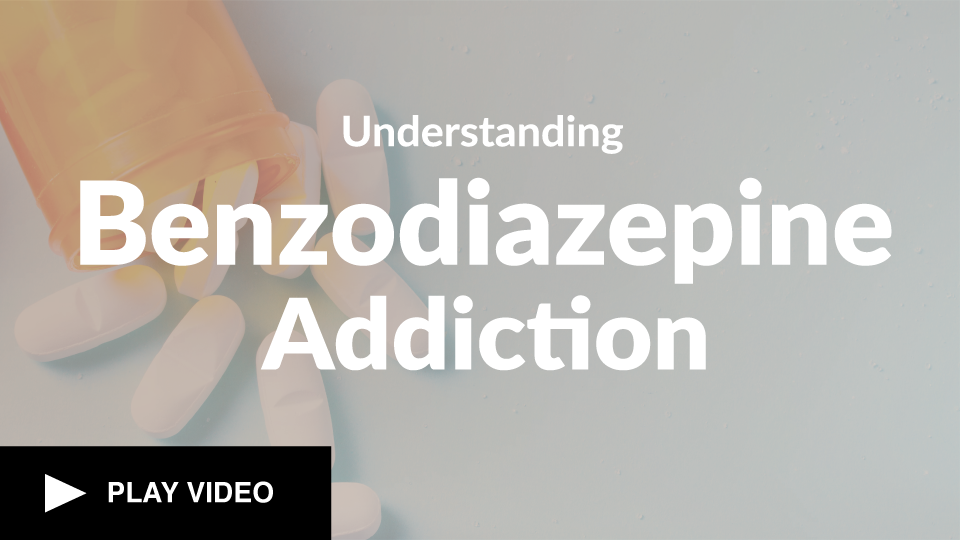
In this video, Tree House addiction counselor Rob Mo explains the signs and symptoms of benzo use, withdrawal symptoms, how it is used, and benzodiazepine addiction treatment.
The Most Common Benzodiazepines
Most benzodiazepines come as a pill or tablet, and they are typically different shapes or colors depending on the type. The appearances of the most common benzos are:
- Xanax: Xanax is sometimes a white, pink, or blue oval-shaped pill. It can also come as a white, rectangular bar (nicknamed bars). The extended-release Xanax pills appear in several colors: white, blue, green, and yellow. Extended-release pills are typically round, square, triangular, or pentagon in shape.
- Klonopin: Klonopin is a blue circular pill with the letter “K” stamped in the center.
- Ativan: Ativan is a white pentagon-shaped pill. It is also made as a liquid solution for injection.
- Valium: Valium is a round, white pill. You can identify this pill by the letter “V” stamped in the middle.
- Librium: Librium comes in capsules and is typically green and white. Librium is also made as a liquid solution for injection.
Please note that the appearances of benzos can vary based on the brand—refer to the images of common benzo for more information.
What Benzodiazepines Look Like
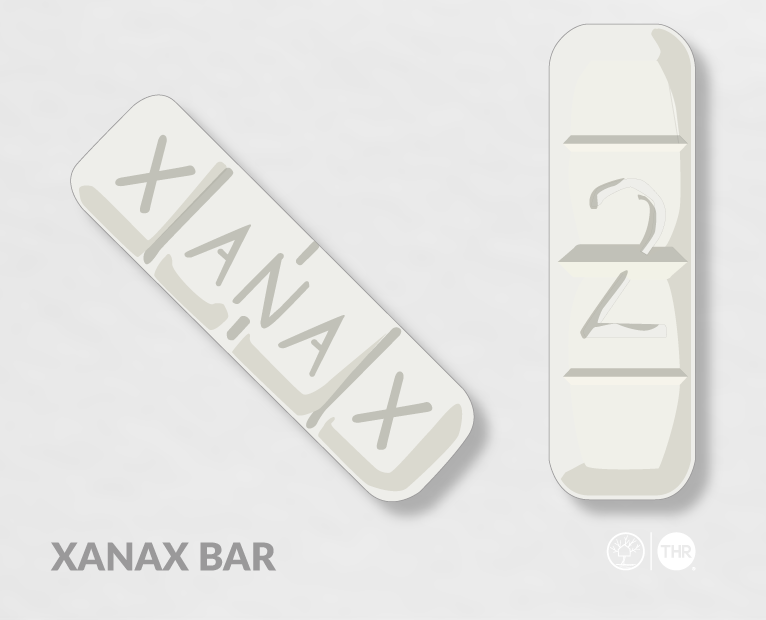
Xanax Bar

Klonopin
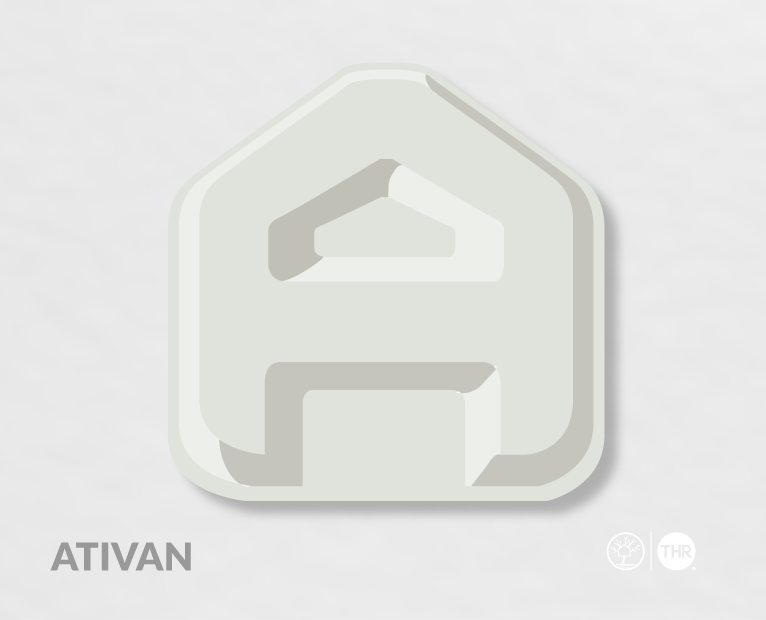
Ativan
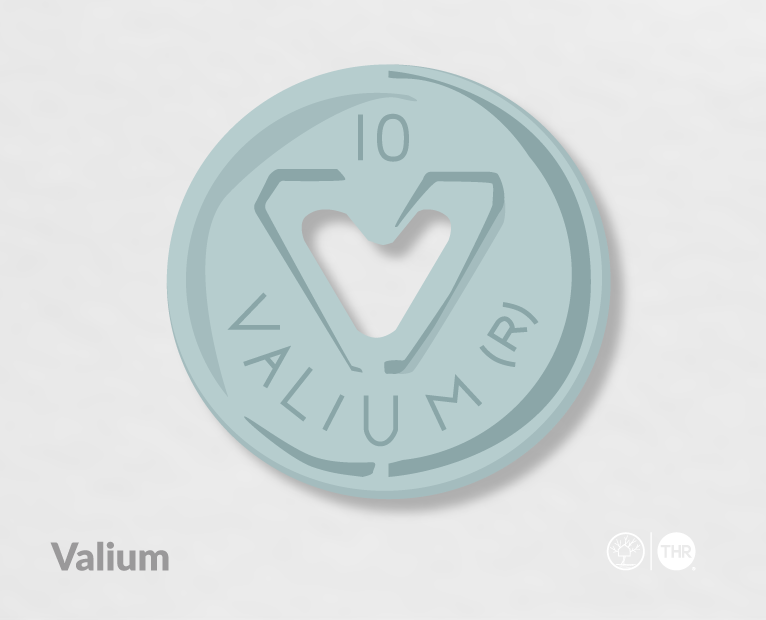
Valium
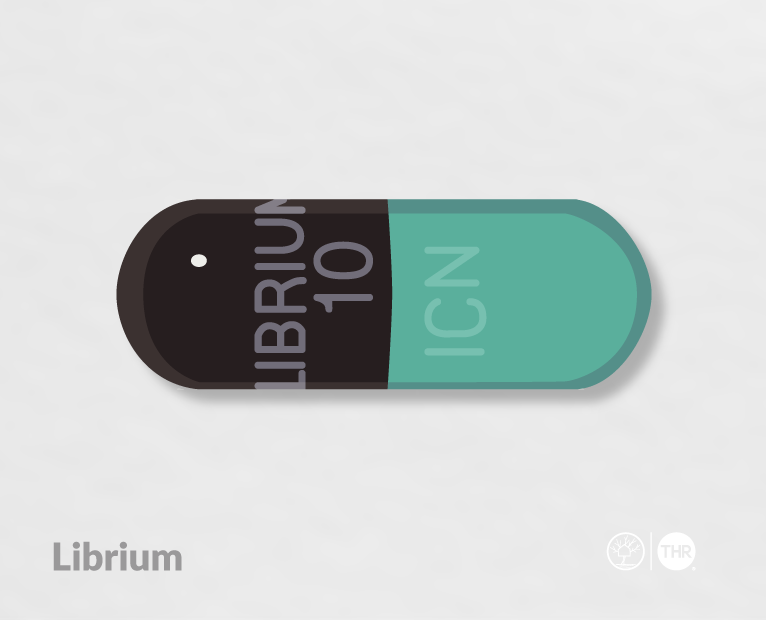
Librium
How are Benzos Used?
If prescribed by a doctor, benzodiazepines are taken in two ways. The first and most common method is in pill or tablet form by mouth. In rare cases of severe anxiety and panic attacks, some benzos may be injected for an instant effect.3
When used recreationally, benzodiazepines can also be crushed and snorted through the nose, providing a quicker effect than if the pill were taken orally. People who use benzodiazepines illegally often mix them with alcohol or other drugs like opioids or methamphetamines. These combinations are incredibly dangerous. When taken with alcohol or downers like opioids, it increases the risk of overdose. If taken with uppers like meth, the two drugs counteract each other allowing a person to use more of each. However, when one wears off, it can lead to a delayed overdose from the other.
Benzodiazepines can be consumed:
- Orally (with pills or tablets)
- By Injection (in rare cases)
- By Snorting
Dangers of Benzodiazepine Addiction:
Benzodiazepines depress the central nervous system. By themselves, the danger of overdose exists when taken either in high amounts or consecutively before the previous dose has fully worn off. However, the majority of people who overdose on benzodiazepines use multiple substances.4, 5
Benzodiazepine Overdose Rates:
As of 2019, benzodiazepines are the 5th highest cause of narcotic overdose cases in America. Between 2013 and 2019, yearly overdose cases rose by nearly 7,000. A large portion of benzodiazepine overdoses involve opioids—roughly an additional 10,000 people per year.6
Overdose Graph: Benzodiazepines
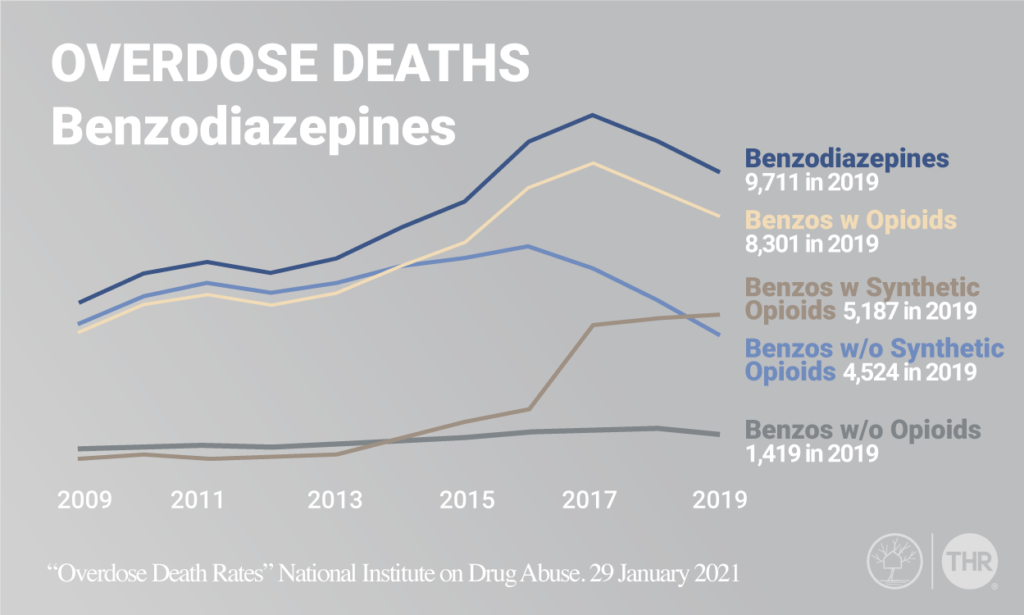
This is a graph of the number of benzo overdoses on the Tree House addiction treatment website. It compares the number of deaths of benzodiazepines, benzodiazepines and any opioid, benzodiazepines without any opioid, benzodiazepines and synthetic opioids other than methadone, and benzodiazepines without synthetic opioids other than methadone. Source cited: “Overdose Death Rates” – National Institute on Drug Abuse. 29 January 2021.
Signs of Benzodiazepine Addiction:
If you think someone in your life may be abusing benzodiazepines, there are some signs to look for. Looking for the physical symptoms and changes in behavior and understanding the effects of benzos can help you know when to reach out for help. You can also look for withdrawal symptoms and listen to hear if they are using some of the street names for benzos. Our benzo addiction treatment program in North Carolina can make a difference for those who are struggling to break free from this substance use disorder.
Physical Signs:
Benzodiazepines are hypnotic sedatives. These types of drugs are made to decrease activity in the brain in order to treat panic attacks, anxiety, insomnia, and seizures. However, when misused, benzos lower brain activity, causing low or decreased energy and slower thinking.7
- Physical weakness
- Weight loss from anorexia
- Confusion
- Blurred vision
- Clumsiness and lack of coordination
- Dizziness
- Drowsiness
- Difficulty breathing
- Shaking
- Headaches
Changes in Behavior:
Benzos are intended to lower your brain activity to produce a sleepy or calming effect in order to treat certain conditions. When people misuse benzos, they often take too much and experience negative behavioral side effects as a result of decreased brain activity. Other behavioral changes you can see come as a result of withdrawal symptoms that occur once the effects of benzos wear off.
- Poor decision-making abilities
- Slurred speech
- Anorexia
- Insomnia
- Odd sleeping patterns
- Forgetfulness
- Doctor shopping
Side Effects of Benzodiazepines
In some cases, benzodiazepines are an effective treatment for panic, anxiety, insomnia, seizures, and for treating the severe symptoms of alcohol withdrawal. When taken correctly and as instructed by a physician, they help people with these conditions live normal lives. However, people who abuse benzos will experience other effects as well. If you think someone is abusing benzos, you can look for the following side effects.
- Euphoria
- Sleepiness
- Calm
- Depression
- Confusion
- Trouble thinking
- Memory problems
- Headache
- Feeling tired or fatigued
- Drowsiness and trouble staying awake
- Difficulty concentrating
- Dry mouth
- Slurred speech or stammering
- Vision impairment
- Loss of coordination
Street Names for Benzodiazepines
People who illegally use benzodiazepines may refer to the drugs by certain nicknames or street names to mask their drug use or more subtly discuss drug use in public. If you hear someone using one of these terms, it could be a sign that they are using benzos:
- Sleeping Pills
- Tranks
- K
- K-Pin
- Pin
- Super Valium
- Candy
- Downers
- Tranks
- Vallies
- Sleeping Pills
- Circles
- Date Rape Drug
- Forget-Me Pill
- La Rocha
- Lunch Money
- Mexican Valium
- Mind Eraser
- Roofies
- Wolfies
- Eggs
- Jellies
- Moggies
- Bars
- Bicycle Handlebars
- Footballs
- French Fries
- Hulk, Ladders
- School Bus
- Xan
- Xanies
- Zan
- Zannies
- Zanbars
- Z-Bars
Overdose Symptoms:
In the event that you believe someone might be overdosing on benzodiazepines, call 911 right away. Doing nothing can have fatal consequences. EMTs can treat benzo overdose cases by injecting them with Flumazenil, which reverses the sedative effects of benzos and allows the central nervous system to function normally again. Symptoms of benzo overdose include:
- Dizziness
- Confusion
- Drowsiness
- Blurred vision
- Slurred speech
- Difficulty breathing
- Bluish fingernails or lips
- Loss of coordination
- Tremors
- Unresponsiveness and coma
Benzodiazepine Withdrawal Symptoms
Withdrawal symptoms from benzodiazepine start a few hours after the drug’s effects wear off. How long the drug’s effects last depends on the type of benzo taken. Xanax and Ativan last hours, while Klonopin can last for a day. Benzodiazepine withdrawal can be dangerous and life-threatening due to the possibility of grand mal seizures.8 That’s why benzo detoxes should always be done at a medical detox where you’ll be prescribed medicines to keep you safe and more comfortable.
- Anxiety
- Panic attacks
- Muscle spasms
- Doctor shopping
- Delirium
- Aches or pains
- Insomnia
- Grand mal seizures
- Coma
- Death
Benzodiazepine Addiction Treatment
There are three phases required to treat benzodiazepine addiction successfully. Phase one is a medical detox—remember, detoxing off benzos without the proper medication can be deadly. It is vital that you detox under the supervision of a medical professional. Phase two is an addiction treatment program. Finally, phase three is aftercare with an individualized maintenance plan.
 Benzodiazepine Detox
Benzodiazepine Detox
It’s possible for people withdrawing from benzodiazepines to experience life-threatening seizures or periods of delirium (detachment from reality) at dangerous times such as while driving or operating machinery. For this reason, the first step to getting off benzodiazepines should always be a medically supervised detox. This includes 24-hour medical supervision and safe narcotics gradually administered to lessen the amount and severity of your withdrawal symptoms
However, it’s important to understand that detox only ends your body’s dependence on narcotics so that you won’t experience physical withdrawal symptoms. It does not address the core of your addiction or the cause of your cravings. To do that, you need a long-term rehab program.

Benzodiazepine Addiction Treatment
Once the detox phase is complete and you are physically stable, you need to address the other possible causes of your addiction. This means identifying what exactly triggers your desire for benzos and how to cope with those feelings and situations without narcotics. More importantly, benzo rehab can help you build a lifestyle filled with habits that will prevent or decrease how often those triggers occur.
Tree House Recovery’s benzo addiction treatment center will help you reach your goals in recovery through a holistic approach.

Aftercare
Recovery doesn’t end after a benzo rehab program—sobriety is a lifelong process. And aftercare is built to support you. Aftercare can help you deal with unforeseen stresses to your sobriety, connect you to support networks, and help you create short or long-term relapse prevention strategies.
Through an aftercare program, you can:
- Maintain Peer connections
- Maintain Physical Health
- Maintain Personal Growth Plan
FAQs About Benzo Addiction Treatment in Wilmington
What are benzodiazepines?
Benzodiazepines—or benzos—are prescription medications used to treat anxiety, panic, and sleep issues. Drugs like Xanax, Ativan, and Valium can be helpful short-term, but they’re highly addictive when taken too often or for too long.
What are common signs of benzo addiction?
People struggling with benzo addiction may take more than prescribed, feel anxious without the drug, or have trouble thinking clearly. Mood swings, memory issues, and withdrawal symptoms are also common warning signs.
How does Tree House Recovery NC treat benzo addiction?
We take a personalized approach that includes medical detox, one-on-one therapy, and holistic care. Our goal is to help you heal fully—not just get through withdrawal.
How can I start treatment at Tree House Recovery NC?
Starting is simple. Just call (910) 812-1728 to talk with our team and set up a confidential consultation.

Author
Robert Funk: Addiction Writer
Sources
- Benzodiazepines vs. Barbiturates: Addiction & Side Effects. MedicineNet. Published August 16, 2018. https://www.medicinenet.com/benzodiazepines_vs_barbiturates/drug-vs.htm#facts_on_benzodiazepines_vs_barbiturates
- Wick JY. The history of benzodiazepines. Consult Pharm. 2013;28(9):538-548. doi:10.4140/TCP.n.2013.538
- Benzodiazepines (Benzos) – What you need to know. Benzodiazepines (Benzos) Published 2019. https://www.rethink.org/advice-and-information/living-with-mental-illness/medications/benzodiazepines/
- National Institute on Drug Abuse. Benzodiazepines and opioids. National Institute on Drug Abuse. Published 2022. https://nida.nih.gov/research-topics/opioids/benzodiazepines-opioids
- Tori M. Alcohol, benzodiazepines often co-involved in opioid overdose deaths. Healio.com. Published April 20, 2020. Accessed June 20, 2025. https://www.healio.com/news/psychiatry/20200420/alcohol-benzodiazepine-use-significantly-associated-with-opioid-overdose-deaths
- Ritvo AD, Foster DE, Huff C, Finlayson AJR, Silvernail B, Martin PR. Long-term consequences of benzodiazepine-induced neurological dysfunction: A survey. PLoS One. 2023;18(6):e0285584. Published 2023 Jun 29. doi:10.1371/journal.pone.0285584
- Alcohol and Drug Foundation. Benzodiazepines – ADF – Alcohol & Drug Foundation. ADF – Alcohol & Drug Foundation. Published January 10, 2023. https://adf.org.au/drug-facts/benzodiazepines/
- Corinne O’Keefe Osborn. How Long Does Withdrawal From Benzodiazepines Last? Verywell Mind. Published April 11, 2019. https://www.verywellmind.com/benzodiazepine-withdrawal-4588452
